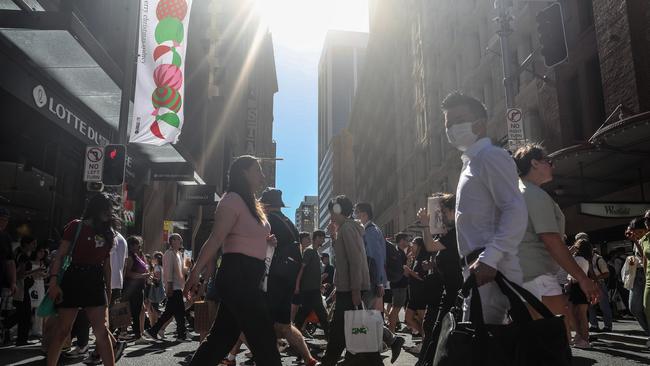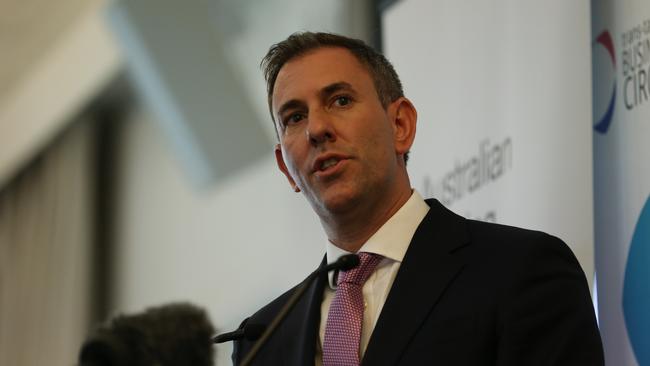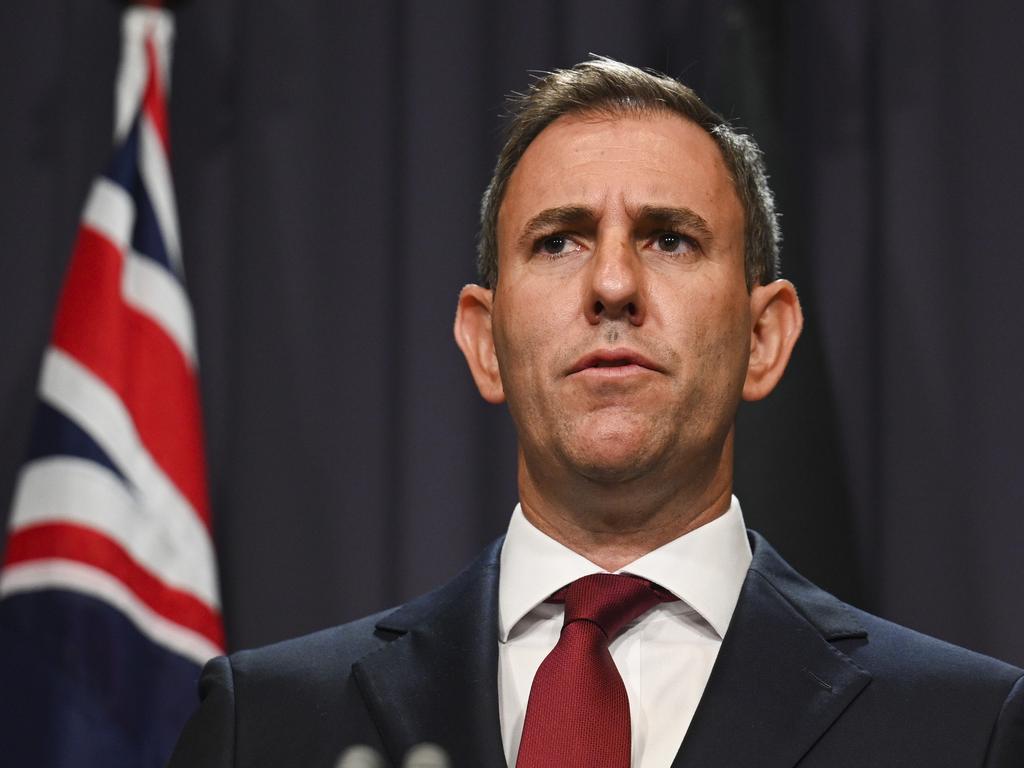Sharp inventories drop stokes fears of shrinking economy
Fears that the economy shrank through the final three months of 2023 have been heightened, after new figures revealed businesses destocked at a surprising pace at the end of last year.

There are growing fears that the economy contracted through the final three months of 2023, after new figures revealed a surprise slump in companies’ inventory levels ahead of Wednesday’s national accounts.
As Jim Chalmers again warned that the economy in the final months of last year was “quite weak”, economists trimmed already skinny growth forecasts for the quarter, despite a lift in business profits driven by earnings in the mining and financial services sectors.
Australian Bureau of Statistics data showed a 1.7 per cent fall in inventories – the amount of product stock a company holds – in the December quarter, a reversal of a 1.2 per cent gain in the previous period and against a consensus prediction for no change.
NAB chief economist Alan Oster said he believed the economy grew by a weak 0.2 per cent in the three months to December, but there was now a greater risk that the economy stalled or went backwards. “Could you be flat to slightly negative based on those (inventory) numbers? Yes,” Mr Oster said.
Even absent an economic contraction at the end of 2023, annual real GDP growth was set to slow to just 1.4 per cent, according to consensus estimates, from 2.1 per cent in the year to September.
Outside the pandemic, that would be the softest outcome since 2000, Mr Oster said, adding that the outlook for the first half of this year was grim. “We don’t expect to see any significant improvement in March or June, but we expect better September and December quarters,” he said.
Westpac senior economist Andrew Hanlan, who before the latest figures had expected economic growth to have stalled at the end of last year, said the larger than anticipated drop in business inventories would be “a substantial drag” of 1 percentage point on December quarter growth, or double what had been anticipated.

The Treasurer on Monday morning repeated that he expected the economy to “slow considerably” under the weight of high inflation, interest rates hikes and global economic uncertainty.
“Inflation remains the main game for us; certainly the primary focus of our economic plan is on putting downward pressure on inflation. But I think whether it’s here in Australia or around the world, the balance of risks is shifting from a primary focus on inflation, before long, to a focus on growth,” Dr Chalmers said.
JP Morgan economist Tom Kennedy said the inventory figures implied “a much larger drag on aggregate GDP than anticipated”, and halved his forecast GDP growth for the final quarter of 2023 to 0.2 per cent.
He said the flip side of such a large drop in inventories would be higher consumption and trade.
“We now forecast slightly stronger government spending and net export outcomes,” he said.
The ABS figures revealed an unexpectedly strong 7.4 per cent lift in company gross operating profits in the December quarter, driven by a 17 per cent surge in mining earnings as commodity prices climbed.
With insurance premiums climbing at a breakneck pace, gross operating profits in the financial services and insurance sector jumped 38 per cent, to be 141 per cent up on a year earlier.
Outside these industries, the picture was more dour, with non-mining profits falling by 0.4 per cent, the seasonally adjusted figures showed.
There was a disappointing 0.9 per cent rise in wages and salaries — against 3 per cent in the previous quarter – which pulled the annual growth rate from 9.8 per cent to a still-high 8 per cent.
Economists said the slowdown reflected a squeeze on hours worked, as well as the previous quarter’s large 5.75 per cent increase to award wages.
“Given the pressures from high inflation, higher interest rates and additional tax obligations, this points to a further decline in real household disposable income,” Mr Hanlan said.
Analysts now await government spending and trade figures, which are out on Tuesday.








To join the conversation, please log in. Don't have an account? Register
Join the conversation, you are commenting as Logout